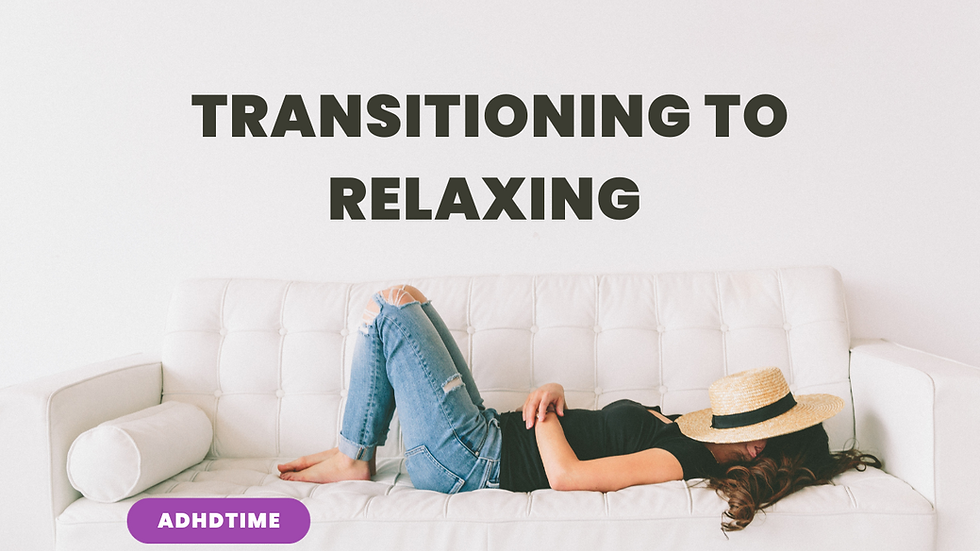Embracing Tranquility: A Guide to Seamless Work-to-Rest Transitions for ADHD Individuals
- Daniella Karidi, PhD

- Jan 11, 2024
- 2 min read

Hello, wonderful readers! It's Daniella Karidi, here to explore a topic close to many of our hearts – mastering the transition from the hustle of work to the serenity of relaxation.
The Mental Tug-of-War
Picture this: It's your day off, and you have a golden opportunity to bask in relaxation. However, as you kick back, a lingering worry creeps in—the fear of getting stuck in this mode and neglecting essential chores. Shifting from work to relaxation isn't just a physical transition; it carries a mental cost that often goes unnoticed.
The Challenge of Transitioning
In our fast-paced lives, switching from a productive mindset to a truly relaxing mode can be surprisingly challenging, especially for individuals with ADHD. Despite the common belief that unwinding should come naturally, the process can be demanding. The fear of being stuck in relaxation mode often overshadows the potential benefits, making it crucial to explore strategies for seamless transitions.
The Art of Seamless Transitions
1. External Cues for Internal Harmony
One of the keys to mastering this transition lies in utilizing external cues. By changing from work clothes to cozy slippers, staying in pajamas, or choosing a different environment—perhaps a comfy bed or sofa—we send signals to our brain that it's time to shift gears.
2. Identifying Personal Obstacles
Understanding the obstacles hindering relaxation is a crucial step. Whether it's racing thoughts or the struggle to disconnect from work, acknowledging these challenges empowers us to address them effectively.
3. Communication as a Catalyst
Communication plays a pivotal role in making these transitions smoother. Informing your partner, children, or colleagues about your shift to relaxation mode sets clear boundaries, reducing the likelihood of conflicting expectations. For those with children, it's also an opportunity to model healthy relaxation behavior.
4. Curate Your Joy List
Create a go-to list of activities that bring you joy and recharge your energy. Keep this list accessible for those moments when you're planning some well-deserved downtime. It serves as a personalized guide to relaxation.
5. Distinguish Between Relaxation and Chores
Not all activities contribute equally to relaxation. Create a "Not Relaxing" list to remind yourself that certain tasks, like doing laundry, are necessary but don't count as recharging activities. This simple distinction can enhance the quality of your downtime.
6. Grant Yourself Grace
Transitions can be challenging for those with ADHD, and that's okay. Giving yourself grace and understanding during these moments of adjustment is crucial. Remember, it's a journey, not a race.
Your Turn: Share Your Relaxing Activity
Now, it's your time to shine! In the comments below, share your favorite relaxing activity. Let's build a community of ideas that inspire us to unwind.
Remember, you have the power to create a harmonious balance between your productive and restful selves.
Until next time, embrace the tranquility within!






Comments